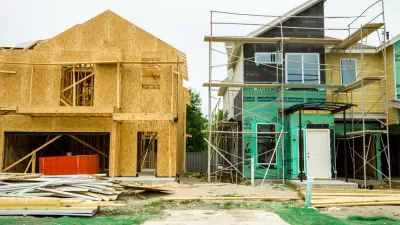A look at how the previous approval of the Hines Bergamont Transit Village project was rescinded after pressure from community activists, by real estate developer and consultant Michael Russell.

Trust is hard to come by for developers wanting to build projects in Santa Monica.
Builders recently learned that lesson the hard way when dealing with city officials and residents of the beachside community, according to real estate developer, consultant, and affordable housing advocate Michael Russell.
After approving the multimillion-dollar Hines Bergamont Transit Village development project earlier this year, the City Council recently changed course and voted 4-3 to rescind the approval. Community activists who objected to the project led an effort to get the approval reversed, writes Russell.
“Because the opposition collected at least 6,500 valid signatures — roughly 10 percent of the registered voters in Santa Monica — the City Council was required to reverse its decision or place the matter before the voters, either in a special election or in November.”
Developers work diligently to meet community demands but often feel like they are in a battle against NIMBYism they can’t win, Russell contends.
“If, as the landowner, you follow all the rules, there is an expectation that the process will yield a vote and, in most cases, a positive vote. If the city council takes a vote and it is positive, there is an expectation that that vote means something. Otherwise, as landowners, we need to give councilmembers lie detector tests.”
Russell goes on to chart the project’s progress and subsequent stalling.
FULL STORY: You Cannot Trust Santa Monica

Planetizen Federal Action Tracker
A weekly monitor of how Trump’s orders and actions are impacting planners and planning in America.

Congressman Proposes Bill to Rename DC Metro “Trump Train”
The Make Autorail Great Again Act would withhold federal funding to the system until the Washington Metropolitan Area Transit Authority (WMATA), rebrands as the Washington Metropolitan Authority for Greater Access (WMAGA).

The Simple Legislative Tool Transforming Vacant Downtowns
In California, Michigan and Georgia, an easy win is bringing dollars — and delight — back to city centers.

The States Losing Rural Delivery Rooms at an Alarming Pace
In some states, as few as 9% of rural hospitals still deliver babies. As a result, rising pre-term births, no adequate pre-term care and harrowing close calls are a growing reality.

The Small South Asian Republic Going all in on EVs
Thanks to one simple policy change less than five years ago, 65% of new cars in this Himalayan country are now electric.

DC Backpedals on Bike Lane Protection, Swaps Barriers for Paint
Citing aesthetic concerns, the city is removing the concrete barriers and flexposts that once separated Arizona Avenue cyclists from motor vehicles.
Urban Design for Planners 1: Software Tools
This six-course series explores essential urban design concepts using open source software and equips planners with the tools they need to participate fully in the urban design process.
Planning for Universal Design
Learn the tools for implementing Universal Design in planning regulations.
Smith Gee Studio
City of Charlotte
City of Camden Redevelopment Agency
City of Astoria
Transportation Research & Education Center (TREC) at Portland State University
US High Speed Rail Association
City of Camden Redevelopment Agency
Municipality of Princeton (NJ)




























